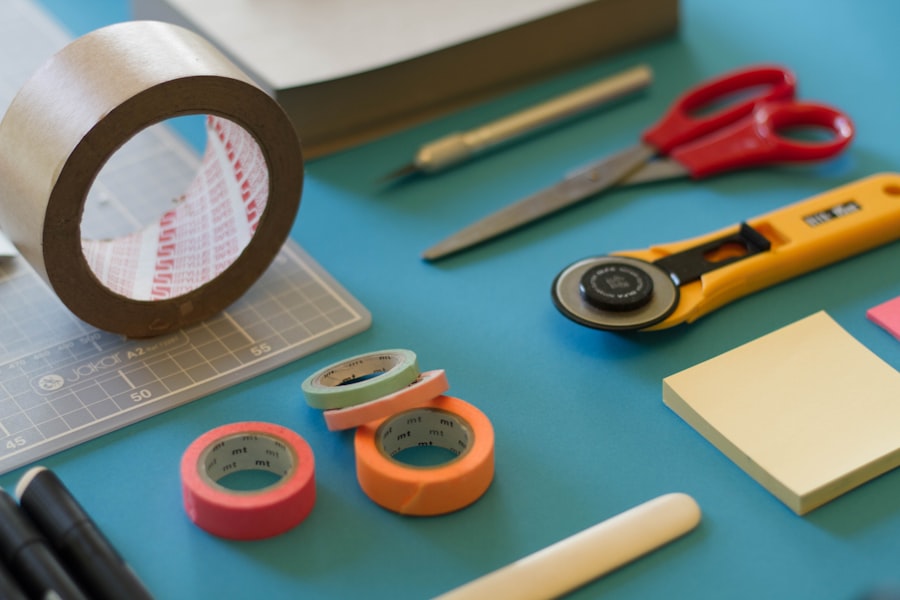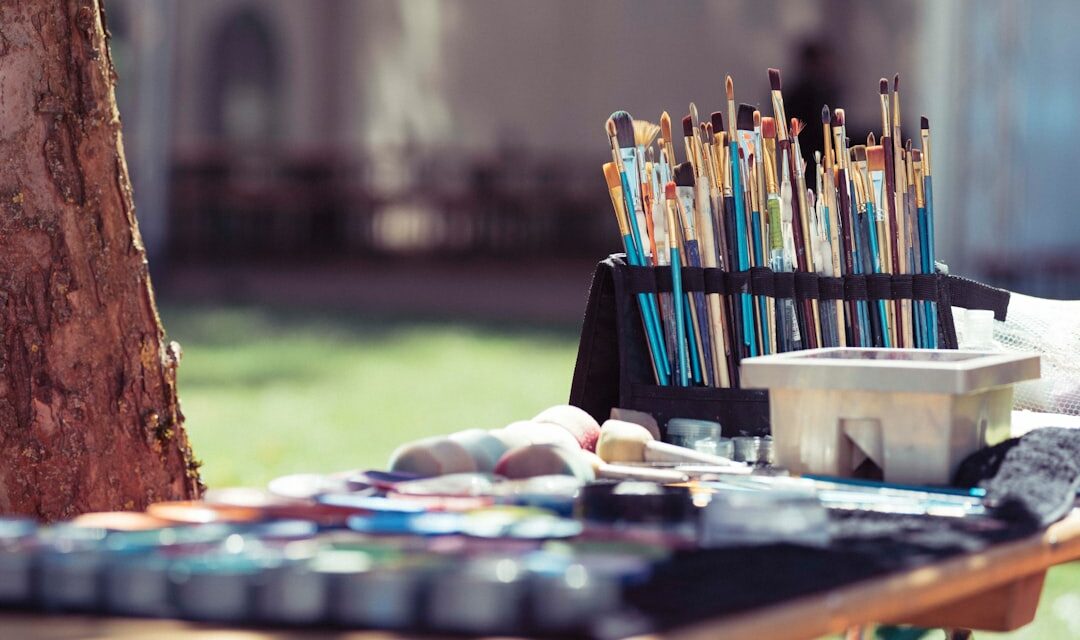Creativity is often perceived as an elusive quality, a spark that ignites the imagination and leads to the birth of new ideas, art forms, and innovations. At its core, creativity is the ability to generate original thoughts or concepts, or to make connections between seemingly unrelated phenomena. It is not confined to the realm of artists or musicians; rather, it is a fundamental aspect of human cognition that can manifest in various forms across different disciplines.
The process of creativity involves a complex interplay of cognitive functions, emotional states, and environmental influences. It is a dynamic journey that often begins with inspiration, followed by exploration, experimentation, and ultimately, the realisation of an idea. The workings of creativity can be understood through various psychological theories.
One prominent model is the “Four Stages of Creativity,” which includes preparation, incubation, illumination, and verification. During the preparation stage, individuals gather information and immerse themselves in their subject matter. This is followed by incubation, where ideas simmer beneath the surface, often unconsciously.
Illumination occurs when a breakthrough idea emerges, and finally, verification involves refining and implementing the concept. This cyclical process highlights that creativity is not merely a spontaneous event but rather a structured journey that can be nurtured and developed over time.
Summary
- Creativity is the ability to generate new ideas, concepts, or solutions through imagination and original thinking.
- Crafting can improve cognitive function, reduce stress, and boost self-esteem, leading to enhanced creativity.
- Engaging in crafting activities such as knitting, painting, or pottery can help stimulate creativity and problem-solving skills.
- Exploring different crafting mediums such as paper, fabric, or clay can inspire new ideas and spark creativity.
- Overcoming creative blocks can be achieved through techniques such as taking breaks, seeking inspiration from nature, and experimenting with new crafting techniques.
The Benefits of Crafting for Creativity
Engaging in crafting activities offers numerous benefits that extend beyond mere enjoyment. Crafting serves as a powerful catalyst for enhancing creativity by providing individuals with a tangible outlet for self-expression. When one immerses themselves in the act of creating—be it through knitting, painting, or woodworking—they enter a state of flow where time seems to dissolve, and the mind becomes fully absorbed in the task at hand.
This immersive experience not only fosters a sense of accomplishment but also encourages innovative thinking as crafters experiment with materials and techniques. Moreover, crafting can significantly reduce stress and anxiety levels, creating a conducive environment for creative thought. The repetitive motions involved in many crafting activities can have a meditative effect, allowing individuals to quiet their minds and focus on the present moment.
This mindfulness aspect of crafting can lead to heightened awareness and clarity of thought, enabling crafters to approach problems with fresh perspectives. As they engage in the creative process, individuals often find that their ability to think outside the box improves, leading to novel solutions and ideas.
How to Cultivate Creativity through Crafting

To cultivate creativity through crafting, one must first embrace a mindset that values exploration and experimentation. This involves letting go of perfectionism and allowing oneself the freedom to make mistakes. Crafting is inherently about trial and error; each misstep can lead to unexpected discoveries and innovative outcomes.
By adopting an attitude of curiosity and playfulness, crafters can unlock new avenues of creativity that may have otherwise remained dormant. Setting aside dedicated time for crafting is also essential in nurturing creativity. Establishing a routine allows individuals to engage consistently with their creative pursuits, fostering a habit that can lead to greater skill development and idea generation.
Additionally, creating a dedicated crafting space filled with inspiring materials can stimulate the imagination. Surrounding oneself with various tools, colours, and textures invites experimentation and encourages crafters to push their boundaries. Ultimately, cultivating creativity through crafting requires patience and persistence, as well as an openness to new experiences.
Exploring Different Crafting Mediums to Spark Creativity
The world of crafting is vast and diverse, encompassing an array of mediums that can ignite creativity in unique ways. Each medium offers distinct characteristics that can inspire different forms of expression. For instance, painting allows for fluidity and spontaneity, enabling artists to explore colour and form without constraints.
In contrast, sculpting provides a tactile experience that encourages three-dimensional thinking and spatial awareness. By experimenting with various mediums, crafters can discover which resonates most with their creative instincts. Moreover, exploring different crafting techniques can lead to unexpected synergies between disciplines.
For example, combining textile arts with digital design can result in innovative fashion statements or home décor items that blend traditional craftsmanship with modern aesthetics. Engaging in workshops or classes focused on unfamiliar mediums can also provide fresh insights and techniques that enhance one’s creative repertoire. Ultimately, the exploration of diverse crafting mediums not only broadens one’s skill set but also fosters a deeper understanding of the creative process itself.
Overcoming Creative Blocks: Tips and Techniques for Crafters
Creative blocks are an inevitable part of the artistic journey; they can be frustrating and disheartening for crafters at any level. However, recognising these blocks as natural occurrences rather than insurmountable obstacles is crucial for overcoming them. One effective technique for breaking through creative stagnation is to change one’s environment.
A simple shift in scenery—whether it be moving to a different room or taking a walk outdoors—can provide new stimuli that inspire fresh ideas. Another approach is to engage in free-form creation without any specific goal in mind. This could involve doodling on paper or experimenting with leftover materials from previous projects.
By allowing oneself the freedom to create without pressure or expectation, crafters often find that their innate creativity resurfaces organically. Additionally, seeking inspiration from external sources—such as nature, art exhibitions, or even conversations with fellow crafters—can reignite passion and motivation. Ultimately, overcoming creative blocks requires patience and self-compassion; recognising that these moments are part of the creative process can help individuals navigate through them more effectively.
Using Crafting as a Tool for Self-Expression and Innovation

The Power of Crafted Pieces
Crafting serves as a profound medium for self-expression, enabling individuals to convey their thoughts, emotions, and experiences in ways that words often cannot capture. Each crafted piece becomes a reflection of the creator’s identity, values, and perspectives. Whether it’s through intricate embroidery that tells a personal story or bold paintings that convey deep emotions, crafting provides an avenue for individuals to articulate their unique voices in a tangible form.
Fostering Innovation and Critical Thinking
Moreover, crafting fosters innovation by encouraging individuals to think critically about their materials and methods. As crafters experiment with different techniques or repurpose everyday objects into artful creations, they challenge conventional notions of what art can be. This spirit of innovation not only enriches the individual’s creative practice but also contributes to broader cultural dialogues about art and its role in society.
Cultivating Creativity and Inspiring Others
By embracing crafting as a tool for self-expression and innovation, individuals can cultivate a deeper connection with their creativity while inspiring others to do the same.
Incorporating Mindfulness and Meditation into Crafting for Enhanced Creativity
The integration of mindfulness and meditation into crafting practices can significantly enhance one’s creative output. Mindfulness encourages individuals to focus on the present moment without judgment, fostering an awareness that can lead to deeper insights during the creative process. By approaching crafting with a mindful mindset—paying attention to each stitch or brushstroke—crafters can cultivate a heightened sense of connection with their work.
Meditation techniques can also be beneficial when incorporated into crafting routines. For instance, beginning a crafting session with a few minutes of deep breathing or guided meditation can help clear mental clutter and set intentions for the creative process ahead. This practice not only calms the mind but also opens up pathways for inspiration to flow more freely.
As crafters become more attuned to their thoughts and feelings during the act of creation, they may find themselves producing work that resonates more deeply on both personal and emotional levels.
Sharing and Collaborating: Building a Creative Community through Crafting
The act of sharing one’s craft with others can be incredibly enriching; it fosters connections within communities while also providing opportunities for collaboration and growth. Crafting groups or workshops create spaces where individuals can come together to share techniques, ideas, and inspiration. These interactions often lead to new friendships and partnerships that enhance one’s creative journey.
Collaboration in crafting can take many forms—from joint projects that combine different skills to community art installations that reflect collective experiences. Such collaborative efforts not only amplify individual creativity but also contribute to a sense of belonging within the larger artistic community. By sharing knowledge and resources, crafters can inspire one another while pushing the boundaries of their own practices.
Ultimately, building a creative community through crafting enriches both personal growth and collective innovation, highlighting the power of collaboration in the artistic realm.
Crafting Creativity is a fascinating process that involves exploring different forms of art and expression. One related article that delves into the world of painting is

